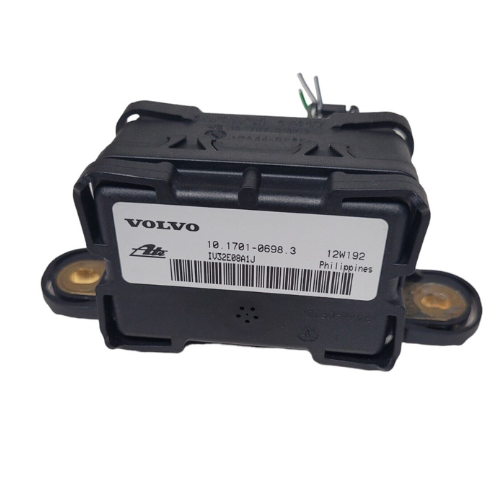No products in the cart.
Automotive
Yaw Rate Sensor, Stability and Control in Modern Vehicles
Key Role in Safety Systems – Vehicle’s Traction Control and Anti-Lock Braking Systems
A yaw rate sensor is a device used in vehicles to measure the rotation rate of a vehicle around its vertical axis. This information is critical in determining the stability and control of the vehicle during cornering and emergency maneuvers. The yaw rate sensor is typically located under the center console or on the floor of the vehicle.
One notable implementation of the yaw rate sensor is in Volvo vehicles. Volvo has been known for its advanced safety features, and their use of a yaw rate sensor is no exception. In Volvo vehicles, the yaw rate sensor is integrated into the stability control system, which is a standard feature on all Volvo models.
SHOP OUR EBAY STORE FOR USED OEM YAW RATE SENSORS
The Volvo yaw rate sensor, also known as rate of rotation around the vertical axis, is a type of MEMS (Micro-Electro-Mechanical System) sensor that measures the vehicle’s angular velocity around the vertical axis. The sensor consists of a tiny vibrating mass that is suspended on a thin flexible beam. When the vehicle rotates around the vertical axis, the Coriolis effect causes a force to be applied to the vibrating mass, which causes it to deflect. The amount of deflection is proportional to the vehicle’s angular velocity, and this information is used by the stability control system to make adjustments to the vehicle’s brakes and engine power.
One of the benefits of the Volvo yaw rate sensor is its accuracy. The sensor is capable of measuring angular velocities as small as 0.02 degrees per second, which is critical in detecting and correcting small deviations in the vehicle’s trajectory. Additionally, the sensor is also capable of detecting sudden changes in the vehicle’s direction, such as when swerving to avoid an obstacle or during emergency maneuvers.
This Volvo Forum provides great community resources in troubleshooting your Yaw Rate Sensor and other issues relating to your Volvo Car
The Volvo yaw rate sensor also works in conjunction with other sensors in the vehicle’s stability control system, including the accelerometer and the steering angle sensor. By combining data from these sensors, the stability control system is able to make real-time adjustments to the vehicle’s brakes and engine power to ensure optimal stability and control.
In conclusion, the yaw rate sensor is an important component of a vehicle’s stability control system, and the Volvo yaw rate sensor is a notable example of its implementation. The sensor’s high accuracy and ability to detect sudden changes in direction make it a critical safety feature in Volvo vehicles. At our Ebay Store, we generally carry “Yaw Rate Sensors” for the Volvo XC90 ranging from 2003 to 2014.
